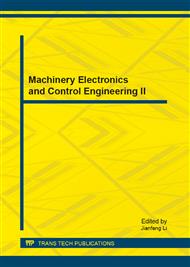p.1055
p.1060
p.1064
p.1069
p.1074
p.1078
p.1082
p.1087
p.1092
Design of Powertrain Parameters and Simulation of Electric Power-Assisted Hybrid Electric Vehicle
Abstract:
Thispaper puts forwards a design method base on a electric power-assisted HybridElectric Vehicle (HEV), which take dead-weight into account to design itsparameter of pivotal components among many actual design methods. Then simulatingand analyzing are made in ADVISOR about its fuel economyand emission. The results of simulation indicated that the fuel economy andemission levels of electric power-assisted HEV which take dead-weight intoaccount to choose its powertrain parameters is far better than the vehiclewhich used the conventional method.
Info:
Periodical:
Pages:
1074-1077
Citation:
Online since:
March 2013
Authors:
Price:
Сopyright:
© 2013 Trans Tech Publications Ltd. All Rights Reserved
Share:
Citation:


